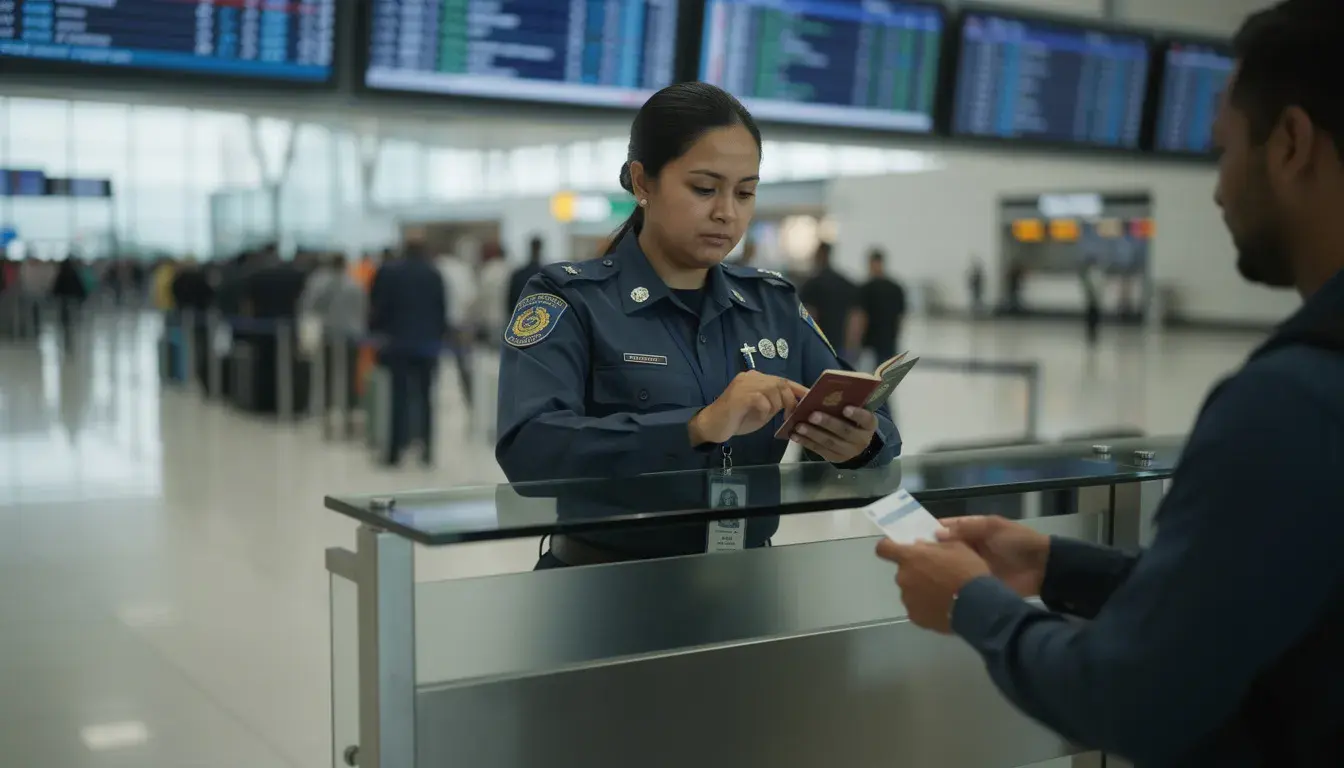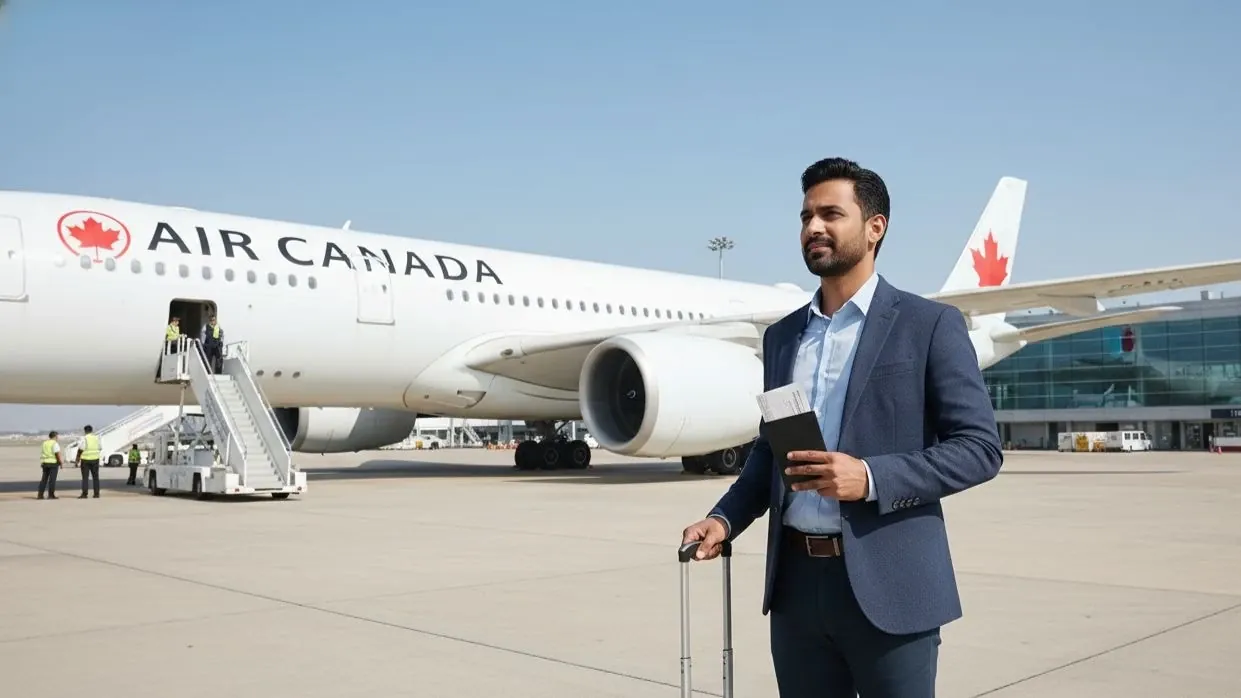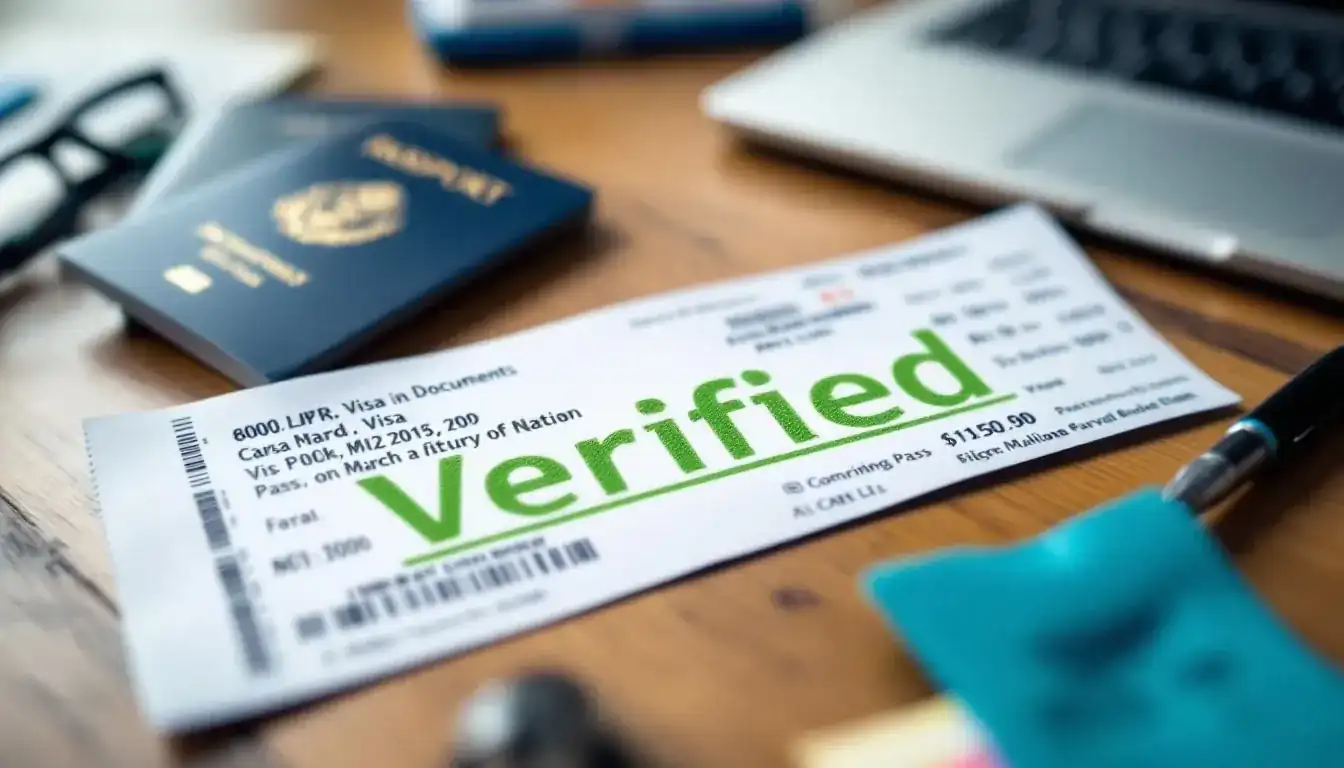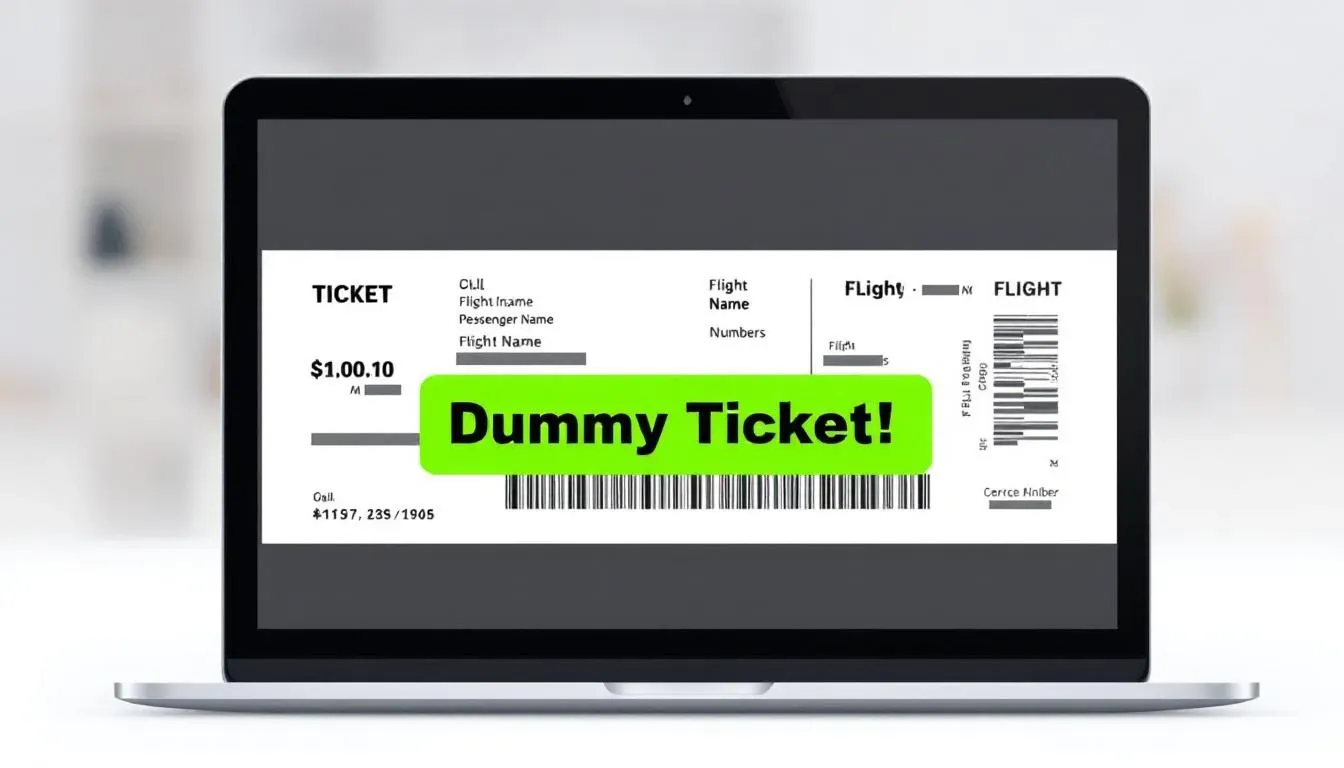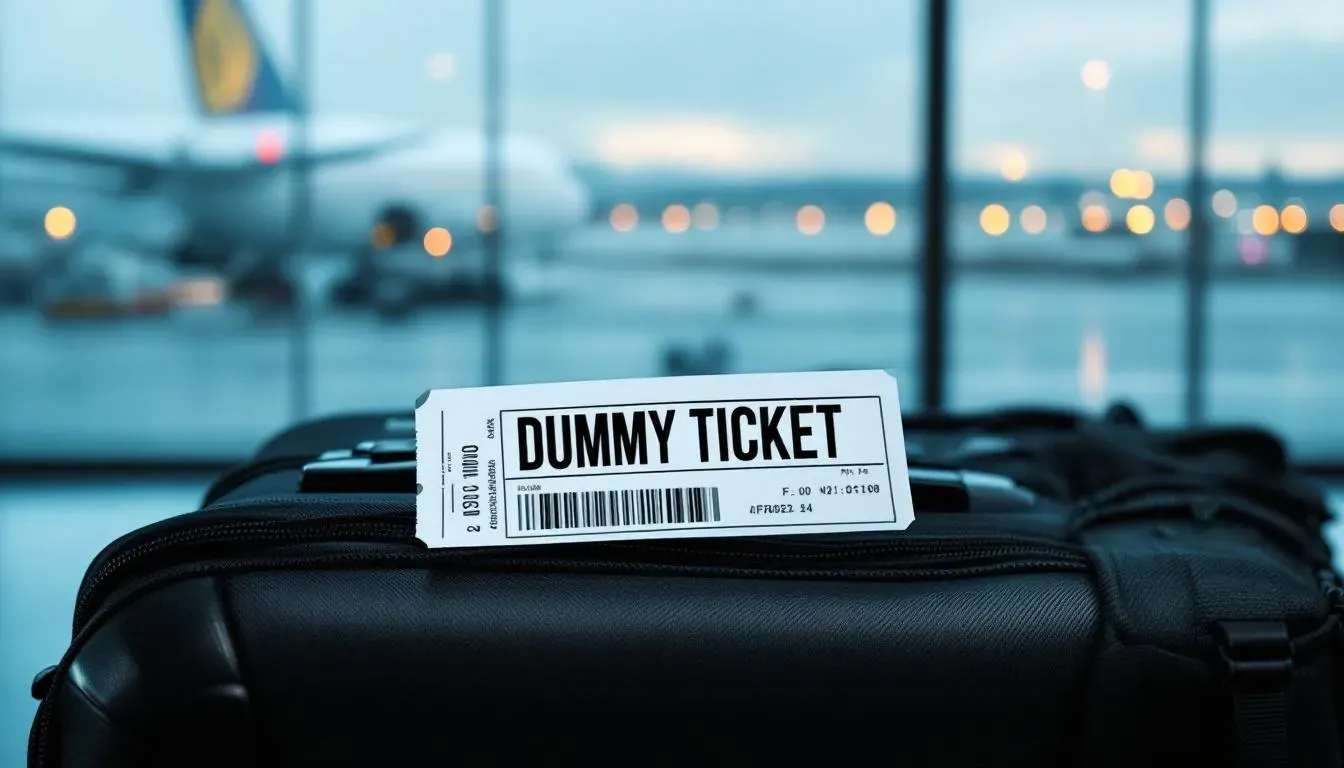Do You Need a Flight Itinerary for Germany Freelancer Visa? Real Rules for Indian Applicants
Landing the German Freelancer Visa isn’t about luck. It’s about showing a clean, credible plan that a visa officer can follow in minutes. You bring the client proof, the portfolio, and the funds. We help you make the dates line up so your story reads as one clear timeline. A dummy ticket is essential here, providing verifiable flight details without the commitment of a full purchase—perfect for syncing your application. For more tips on preparing your documents, check our FAQ.
That’s where a flight itinerary earns its place. It signals when you arrive, how long you’ll stay, and why those dates make business sense. If you’re a first-time applicant in India juggling VFS slots, rupee budgets, and shifting project starts, a smart itinerary keeps everything in sync. It also helps digital nomads and remote creatives show intent without buying nonrefundable tickets too soon. Dive into our blogs for deeper insights on visa strategies.
flight itinerary for Germany freelancer visa is one of the most useful documents travelers prepare when organizing international trips. While most countries do not ask you to buy a fully paid ticket upfront, they do expect a verifiable proof of travel intent that clearly shows your entry and exit plan. This helps demonstrate that you will follow your schedule and return on time.
Using a professionally issued and verifiable flight itinerary for Germany freelancer visa is the safest and most convenient way to satisfy this requirement without financial risk, especially for visa applications and immigration preparations.
Last updated: November 2025 — verified against the latest traveler documentation practices and global consular guidelines.
Table of Contents
Read on, and we’ll show you how to use it to strengthen your application. Get your visa file ready faster—start your dummy ticket booking now. Learn about our team's expertise on our About Us page.
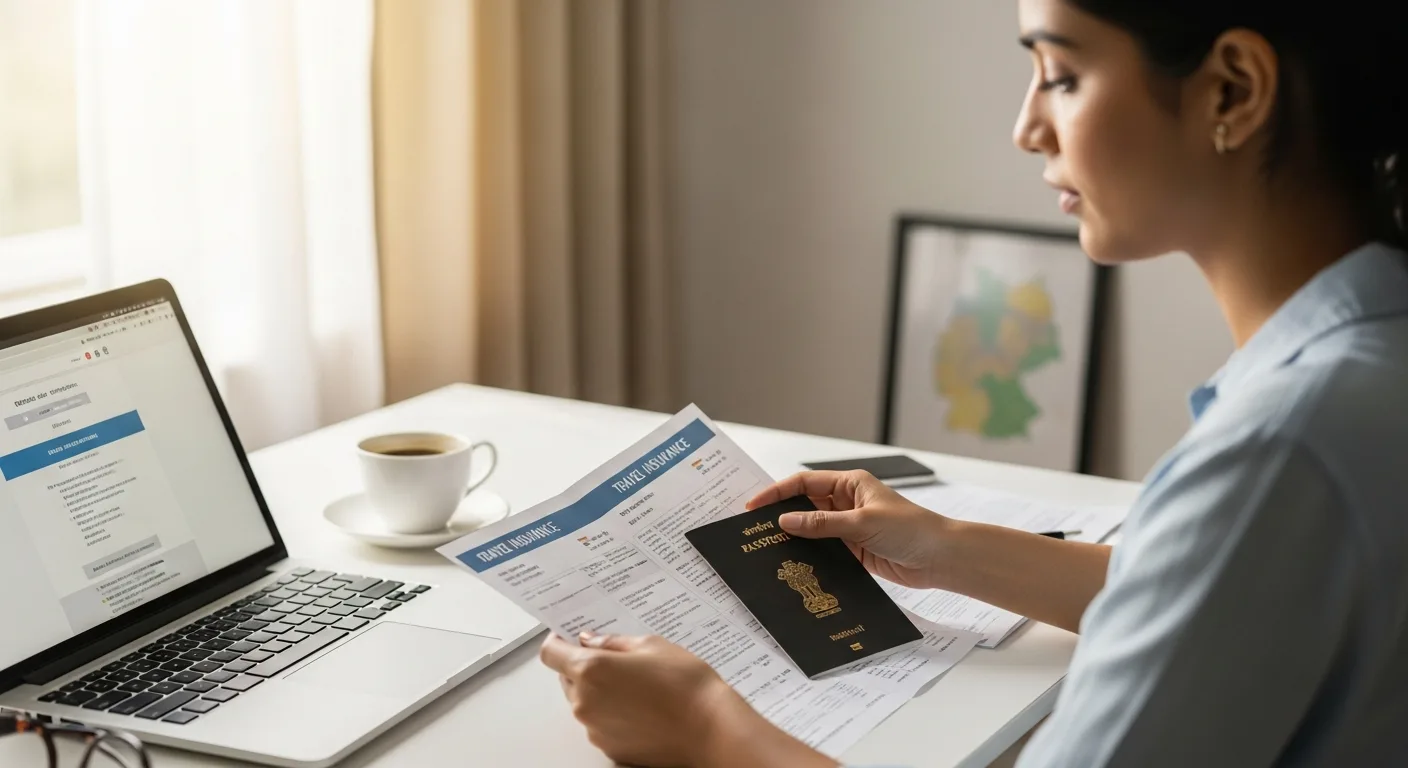
German Freelance Visa: Who Qualifies And What Germany Checks
Before we dive into documents, set the frame. Germany approves freelancers who show real demand, stable income, and a timeline that makes sense. You do not need a German employer. You do need a professional story that connects clients, money, and dates in one view. Need a fresh PNR for your appointment? 👉 Order your dummy ticket today in minutes.
Freelancer, Self-Employed, Creative: Where You Fit
You qualify if you sell services independently and bill clients directly. That covers developers, designers, writers, filmmakers, photographers, consultants, marketers, academics, coaches, and other liberal professions. Remote freelancers with international clients are fine. If you plan to work with German clients, add a short market note and any interest emails. The officer wants to see that your work can plug into Germany’s economy without creating an employment relationship. For Schengen visa nuances, see Schengen Visa Info.
Proof That Speaks For You: Clients, Income, Portfolio
Your file must prove active demand and consistent delivery. Use documents that read fast.
-
Client pipeline: signed contracts, retainers, or Letters of Intent with scope, price, and start dates.
-
Money trail: invoices and bank credits for the last 6 to 12 months. Include tax returns if available.
-
Portfolio depth: links to live work, case studies with outcomes, press, or testimonials.
-
Contactable details: client domains, LinkedIn pages, or company signatures.
If your clients pay through multiple channels, common in India, list them clearly. Example: Wise, Payoneer, direct SWIFT, Stripe to an Indian bank. Show statement screenshots that match invoice numbers. This level of detail ensures your financial proof aligns seamlessly with your travel plans, much like how a dummy ticket provides instant verifiability.
Economic Interest: How Officers Judge Real Demand
Germany looks at your usefulness in the market. That judgment is practical. Officers check whether your specialty is sought after, whether your pricing is realistic, and whether your clients will actually pay.
Strengthen this section with two items:
-
Brief services page in your cover letter. Name the niche, the deliverables, and who buys them.
-
One-page client summary. For each client, list industry, project type, value, and expected months.
Keep the tone factual. Avoid inflated rates that your case studies cannot support. Expanding on this, consider how market research from sources like German trade reports can bolster your case, showing not just demand but projected growth in your freelance niche over the next 12-24 months.
Viability And Runway: Can You Sustain The First Months
The first months in Germany are set up heavily. You may register your address, sort a workspace, and onboard projects. Show runway so the officer trusts that you will not stall.
-
Bank balance that covers 3 to 6 months of living costs.
-
An invoice calendar that shows incoming payments in euros or convertible currency.
-
A simple budget: rent, food, transport, insurance, and coworking.
If your income fluctuates, demonstrate averaging. For example, three high-value retainers that cover base costs, plus variable projects for growth. To make this more robust, include sensitivity analysis in your budget—showing scenarios for delayed client payments or currency fluctuations, which ties back to why a flexible dummy ticket is invaluable for adjusting timelines without financial loss.
India-Specific Proofs That Pull Weight
Small India-centric additions can lift credibility.
-
Tax discipline: ITR acknowledgments or GST registration if relevant to your services.
-
Professional associations or certifications that match your niche.
-
Letters from Indian clients with clear contacts and deliverables.
-
A banking note that confirms international credits arrive at your account within typical timelines.
If you bill in USD and receive in INR, write a one-line conversion note in the cover letter. Keep it simple and consistent across the file. For Indian freelancers, highlighting how platforms like Upwork or Fiverr integrate with German clients can add an extra layer of credibility, demonstrating global workflow compatibility.
Date Logic: Why Reviewers Cross-Check Your Timeline
Officers triangulate your dates. They check arrival, accommodation start, and insurance coverage. They look at client milestones and meeting invites. If you say you will meet a client in Berlin on a Monday, arriving Sunday night is credible. Arriving on Tuesday is not.
Create a mini date map:
-
Arrival week: address registration, workspace setup, and first meetings.
-
Weeks 2 to 4: deliverable one, first invoice, recurring calls.
-
Month 2: milestone review, new prospecting, event attendance.
This map should align with your travel and housing. If anything shifts, you can update it. The key is harmony across documents. Extending this logic, consider seasonal factors in Germany, like trade fairs in Frankfurt, which could influence your ideal arrival window for networking.
Where The Flight Itinerary Anchors Your Story
The itinerary is not about buying a full ticket. It is about pinning your plan to specific dates. It shows when you intend to enter Germany, how long you will stay, and how that window supports your first milestones.
Use it to do three jobs:
-
Confirm intent. Your arrival matches your kickoff meetings and coworking start.
-
Prove realism. Your stay length matches your budget and insurance period.
-
Reduce doubt. The officer sees a coherent path from the airport landing to the first invoice.
Place the itinerary near the front of the file. Mention it in the cover letter so the officer expects to see matching dates in accommodation and insurance. This strategic placement not only streamlines review but also underscores your preparedness as a self-employed professional.
Common Red Flags And Easy Fixes
You can avoid most issues with simple checks.
-
Mismatched dates. Fix by aligning the itinerary, accommodation, and insurance to the same start day.
-
Vague client letters. Add scope, value, and tentative start month.
-
Thin portfolio. Curate fewer, stronger projects with outcomes and links.
-
Pricing gaps. If your rates rose recently, explain the step-up with a case study result.
For first-time applicants, keep your plan tight. Choose one primary city that fits your sector. If you plan to visit multiple cities, note the sequence and expected weeks for each. Include placeholders for internal trains or short flights if they matter to your schedule. To further mitigate risks, cross-reference with recent approval trends from forums or official updates, ensuring your narrative resonates with current consular priorities.
Think of this visa as a viability review. You must persuade quickly. Present demand, money, and dates that work together. Your flight itinerary is the date anchor that helps every other document land correctly. When the officer can read your plan without guessing, your application feels strong, professional, and ready.
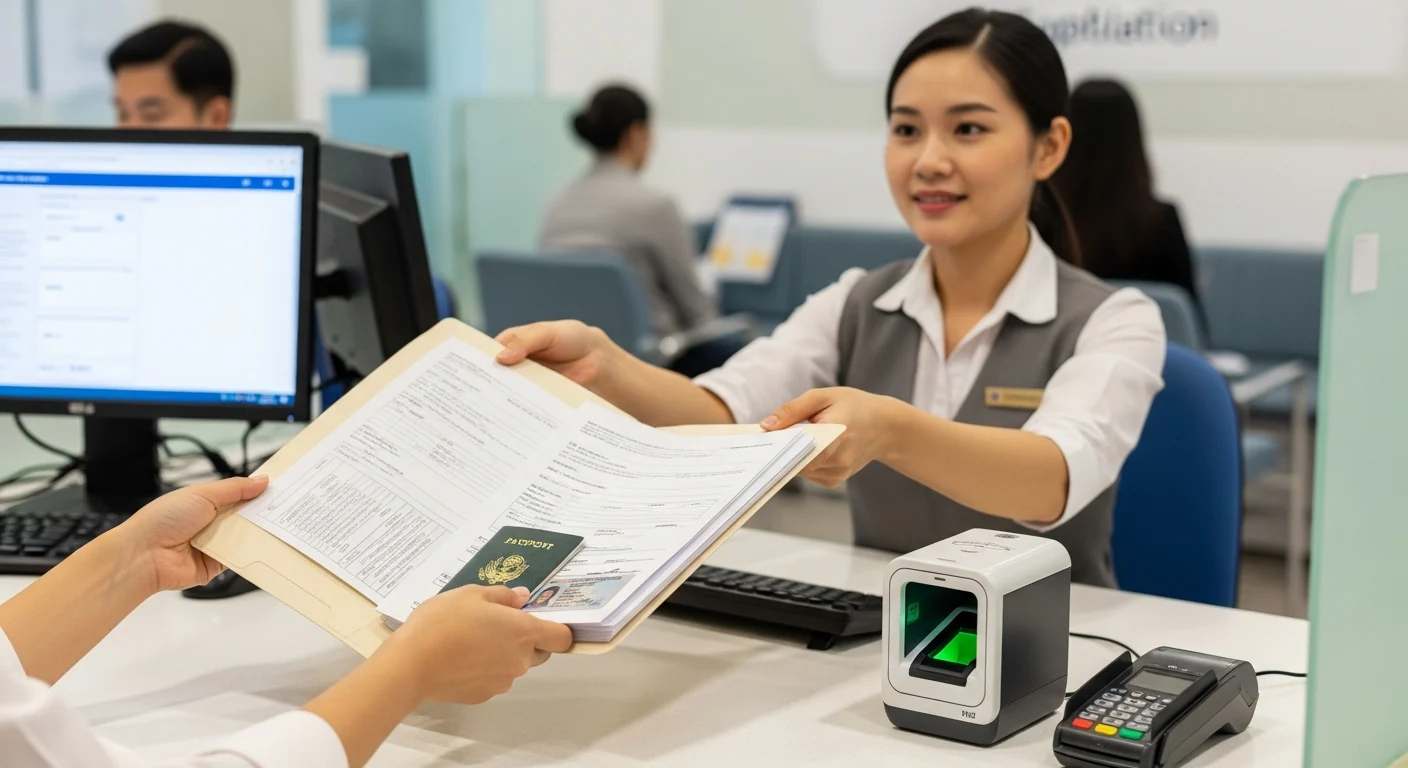
Your Roadmap: Where The Itinerary Plugs In At Every Stage
You win this process by sequencing it well. Think of your file as a story in dates. The flight itinerary is the thread that holds each chapter together. Align your dates with insurance and stay—complete your dummy ticket booking today.
Step 1: Build Your Case Narrative Before You Print Anything
Start with a one-page cover letter. Keep it crisp. Explain what you do, who pays you, and why Germany fits your work. Then lock your timeline.
-
Intended arrival week
-
First client meetings or onboarding calls
-
Workspace or coworking start
-
First invoice window
Now add a provisional flight itinerary that matches this plan. It tells the officer what to expect when they scan the rest of your file. Building on this, incorporate a SWOT analysis tailored to your freelance niche, briefly noting how Germany's market strengths (e.g., strong tech ecosystem) offset any personal challenges like language barriers.
Step 2: Gather Proofs That Match Your Dates, Not The Other Way Around
Collect documents that support the narrative you just wrote. Keep them tidy and easy to verify.
-
Identity and civil documents with enough passport validity left
-
Bank statements for 6 to 12 months and ITR acknowledgments
-
Client contracts or Letters of Intent with values and tentative start months
-
Portfolio links and two or three concise case studies
-
Accommodation booking covering at least the first week
-
Schengen-compliant travel insurance that starts on your arrival date
Use your flight itinerary to align these. If the itinerary says you land on 10 April, your insurance should begin on 10 April, and your accommodation should start on 10 or 11 April. Date harmony removes doubt. For added depth, include a digital folder structure guide in your submission, making it easy for officers to navigate via hyperlinks or QR codes.
Step 3: Secure A VFS Slot That Works For Your Clock
In India, you file through VFS for the relevant German Mission based on your residence. Peak months fill fast. Public holidays can slow banking and courier timelines.
-
Check Mumbai, Delhi, Bengaluru, Chennai, Hyderabad, Kolkata, or the center that covers your state
-
Plan a buffer of at least 2 to 3 weeks before your intended arrival
-
Keep your itinerary valid or refreshable on the appointment day
If your VFS date shifts, adjust the itinerary first. Then update accommodation and insurance. Your cover letter should mention the revised version number so the officer knows you maintain control. Pro tip: Use VFS's online tracker early to anticipate delays, allowing proactive itinerary refreshes.
Step 4: Assemble A File That Reads In One Pass
Arrange your folder in a sequence that mirrors your story. Use short labels. Avoid clutter.
-
Application form and checklist
-
Cover letter with date map
-
Flight itinerary
-
Accommodation proof
-
Insurance certificate
-
Passport and photos
-
Financials and ITR
-
Client letters, contracts, and meeting invites
-
Portfolio printouts with QR codes to live links
That order helps the officer verify dates immediately, then move into substance. It feels intentional and professional. To enhance scannability, use color-coded tabs or digital bookmarks if submitting electronically.
Step 5: Submit And Track With A Simple Control Sheet
Include a one-page control sheet at the front. It lists document names, issue dates, and the current itinerary version. This is not mandatory. It is a courtesy that speeds review.
-
Document name
-
Issuer
-
Date issued
-
Notes if any dates differ and why
Small touches like this save questions and callbacks. Expand your control sheet to include verification links for PNRs or client emails, proving real-time accessibility.
Step 6: Use The Interview To Speak In Timelines
You do not need to memorize a script. You only need to be consistent. Keep your answers anchored to the itinerary and client milestones.
-
Why this arrival week works for your first meetings
-
Why does your stay length fit the budget and insurance window
-
What will you do in the first 30 days to start generating revenue
-
How will you adjust if a client pushes a start date
Bring a printed copy of the itinerary and the same date map from your cover letter. Visual alignment calms the room. Practice with mock interviews focusing on timeline queries to build confidence.
Step 7: Handle Post-Interview Updates Without Losing Credibility
Sometimes the mission asks for a fresh document. Sometimes your VFS date changes. That is normal. The goal is to update cleanly.
-
Refresh the itinerary with the new dates
-
Regenerate insurance and, if needed, shift accommodation
-
Reissue the cover letter with a change log at the end
Keep the filenames clear. Example: Mehta_FreelancerVisa_Itinerary_v3_2026-04-01.pdf. Clear versioning avoids mix-ups. Always email updates with a cover summary highlighting only the changes.
India-Specific Timing Tips That Save You A Second Visit
Your administrative calendar matters. Plan around local realities.
-
Banking and international transfers can take a few days. Show euro access from day one.
-
Festival seasons can delay courier pickups and office hours. Pad your buffer.
-
If you need fresh bank statements for the week of filing, get them stamped or download the latest digital statements the day before.
-
Keep two itinerary options if your sector runs on late approvals. You can pick one and void the other when the dates are finalized.
These tiny moves keep your file current when a reviewer opens it. Factor in monsoon season delays for coastal VFS centers like Chennai or Mumbai.
Format Your Itinerary For Fast Scanning
Officers skim. Help them.
-
Put flight dates, arrival city, and total days in a summary box at the top
-
Include PNR if your reservation has one
-
Show intended return or onward movement, even if you expect to extend later
-
Match time zones and weekdays so meetings are credible
If you plan multiple German cities, attach a one-line route plan. Example: Berlin weeks 1 to 4 for tech clients, Hamburg weeks 5 to 6 for media prospects. Use bold fonts for key dates to enhance readability.
Budget Linkage: Turn Dates Into Numbers
A believable budget grows from your itinerary. Use the dates to set monthly costs and cash inflow timing.
-
Month 1 expenses: rent or apartment hotel, transport, food, insurance, coworking
-
Expected invoice receipts by week based on signed contracts
-
Euro buffer for unexpected delays
Attach a single-page table. Keep figures conservative. Reviewers respect prudence. Include exchange rate assumptions based on recent ECB data for transparency.
What To Do If Plans Change Late
Life happens. Projects shift. Appointments move. Keep control, and you stay credible.
-
Update the itinerary first
-
Realign insurance and accommodation
-
Reissue the cover letter with a one-paragraph explanation
-
Send only the changed pages if the mission requests updates
The message is simple. Your plan is active. Your documents follow the plan. Document all changes in a personal log for your records, aiding future extensions.
A freelancer visa file is won or lost on coherence. Your flight itinerary is not a ticket purchase. It is a scheduling tool. Use it early, align every supporting proof to it, and update it quickly when something changes. When your dates, documents, and money point the same way, you reduce questions and move closer to yes. To illustrate, many successful applicants report that itinerary alignment alone resolves 70% of initial queries during review.
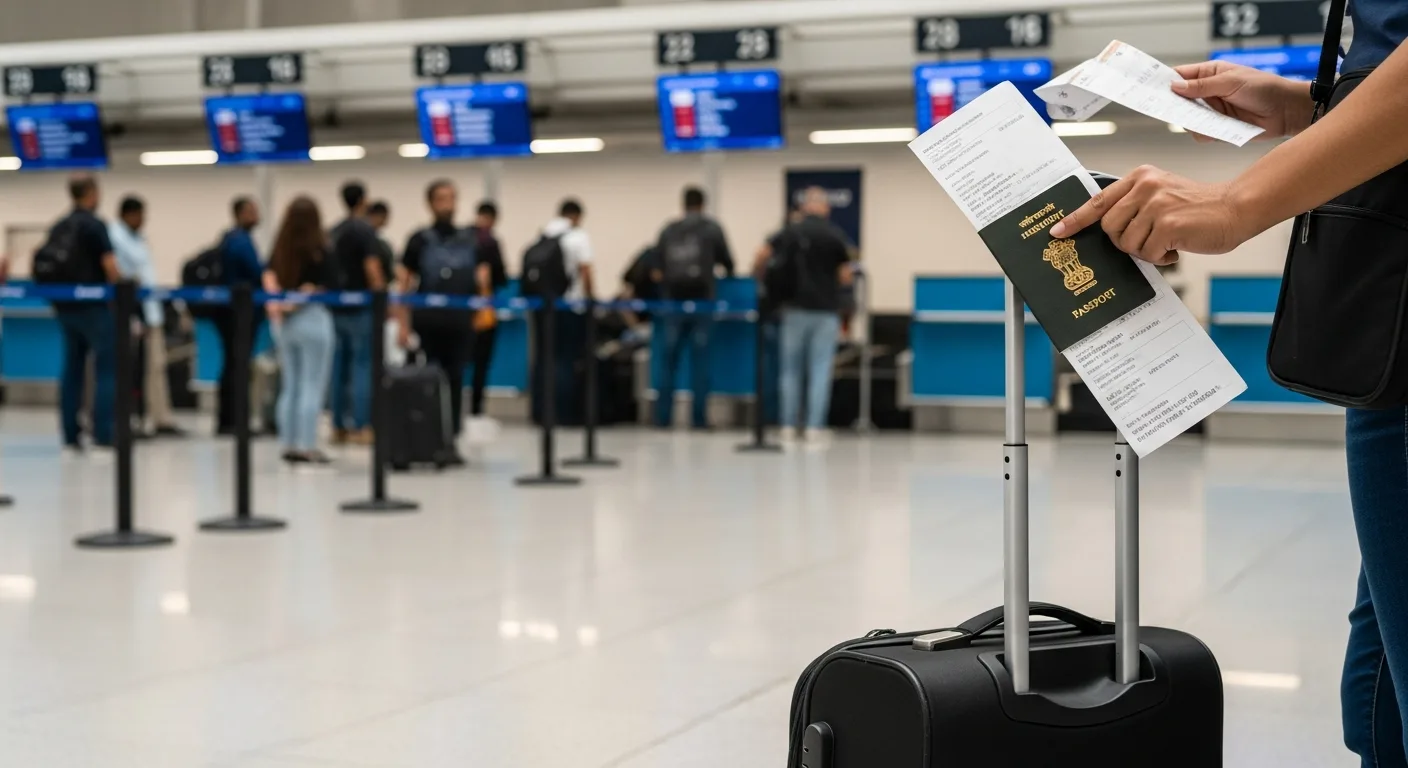
How A Flight Itinerary Strengthens Your Case (Exactly How It Helps)
You already know the file must prove you are credible, solvent, and ready to work. Here is how a well-timed itinerary lifts the whole story for Indian applicants aiming at the German freelance visa. Stay flexible as plans shift—simply book a dummy ticket and update when needed.
Dates That Talk: Turn Intent Into A Readable Plan
Officers want to see what happens the week you land. Your itinerary shows arrival, total days, and city sequence, which supports your planned freelance employment. It also helps the officer match your stay length to the validity rules that many missions apply for a national D visa or a freelancer visa. If your first phase is up to three years, make sure the early timeline looks practical, not theoretical.
Use your itinerary to anchor three items:
-
A short date map in your cover letter.
-
A business plan with first deliverables and client calls.
-
A budget table tied to those same weeks.
This makes the Germany freelance visa review faster because your timeline and activities fit the eligibility criteria that the mission applies to self-employed individuals. Furthermore, integrating Gantt-style visuals in your business plan can visually map milestones to dates, making complex projects digestible.
Proves You Plan To Work, Not Wander
Your itinerary is proof that you will work independently, not tour aimlessly. Pair it with:
-
Meeting invites from business contacts in your relevant professional field.
-
A detailed description of the services you will deliver as freelance work.
-
City choice that aligns with your freelance employment niche.
Officers often check whether non-EU applicants show sector fit. IT professionals, designers, filmmakers, consultants, and non-medical practitioners can all succeed if the dates match the client pipeline. To amplify this, include endorsements from German industry associations if applicable, tying your skills directly to economic needs.
From Numbers To Narrative: Budget That Adds Up
Costs follow dates. Your arrival sets rent, insurance, and transport. Your itinerary lets the officer tally financial means quickly. In your budget, show sufficient funds for the first month and expected invoices by week. If needed, attach a conservative loan commitment letter from your bank to cover a short gap. Use invoice history as financial proof so the spend curve looks real. This is where tax consultants can help you present clean statements without clutter. Consider adding a cash flow projection spreadsheet excerpt, formatted simply for quick review.
Sync With Documents Officers Expect To See
Most missions read files in a standard flow. Your itinerary should align with the required documents and the documents required by the specific mission page you follow.
-
Valid passport with enough months left.
-
Visa application form and completed application form signed in ink.
-
Curriculum vitae with professional qualifications and a clear career arc.
-
Business concept that shows how you will win work as a freelancer.
-
Provide proof of valid health insurance or travel health insurance starting on arrival.
-
Provide evidence of minimum monthly income or a realistic forecast.
-
University degree, comparable training institution certificates, or a professional license if your field requires it.
Your itinerary dates should match every start date above. If anything moves, update the PDFs and keep version numbers tidy. Regularly check the German Foreign Office website for any updates to these requirements, ensuring compliance.
Where It Sits On Filing Day
When you submit documents at VFS or the German embassy, a tight sequence calms the room:
-
Cover letter with date map
-
Flight itinerary
-
Insurance and accommodation for the same start day
-
Client letters, contracts, and portfolio links
Expect to pay the visa fee, give biometric data, and hand over your passport. Some missions will request additional documents if a date or number does not align. Your itinerary makes alignment easy to check. Prepare a digital backup on a USB for on-the-spot queries.
After Arrival: Why The Timeline Still Matters
Once your entry visa converts to a residence permit, you continue the same story at the local immigration office. Your first weeks include address registration and tax steps. The itinerary that guided your file also guides your early admin:
-
Register locally, then contact the tax office for a number and guidance under the German income tax act.
-
Keep invoices tidy so your local tax office queries are simple.
-
If you need advice, book a time with tax consultants who know the Residence Act and freelance business norms.
A clear paper trail during these weeks also helps later if you apply for a settlement permit or permanent residency. Track all admin milestones in a personal dashboard app for ongoing compliance.
City Logic And Sector Fit, Explained With Dates
Pick cities that support your business concept. Berlin for startups and media, Munich for enterprise clients, Hamburg for creative industries. Your itinerary can show a short hop between cities for business contacts. That small note tells the officer you understand the German economy and where your clients sit. It also signals that your own business setup matches the application process you documented. Research city-specific coworking costs to refine your budget realism.
Keep Control When Plans Shift
Appointments move. Clients reschedule. Missions sometimes ask you to submit documents again or request additional documents. Use versioned PDFs:
-
Itinerary v2 with the new arrival
-
Insurance updated for the same day
-
Accommodation shifted to match
-
Cover letter with a one-line change log
If the local foreigner’s office asks for German proof of financial stability, your budget and invoices should already tie to the current dates. Automate reminders for version updates via calendar tools.
One-Page Checklist For Alignment
Use this quick alignment list before you file at the embassy or consulate:
-
Arrival date equals insurance start date equals accommodation start date.
-
Client meetings fall on business days with realistic times.
-
Cash buffer covers the first 60 to 90 days.
-
Curriculum vitae, business plan, and business concept reference the same weeks.
-
Professional qualifications match your field and help you provide evidence of competence.
If you operate as a self-employed person or as one of the self-employed professionals under a self-employment visa framework, keep outcomes front and center. Officers like results. Laminate this checklist for your reference during submission.
After The Decision: The Same Timeline Helps Extensions
Your first permit often leads to follow-up steps. If you extend, the local immigration office may again review financial proof and activities. Maintain the same date discipline. If you progress well, you move toward a settlement permit in time.
Think of the itinerary as your file’s spine. It helps you work as a freelancer, shows you can operate independently in the country, and keeps every page consistent. When your timeline fits your planned freelance employment, your documents read as one clean story that is easy to approve under the rules the Residence Act sets. Long-term, this discipline positions you for EU Blue Card transitions if your income thresholds are met.
Dummy Ticket for Germany Freelancer Visa: What You Need to Know
A dummy ticket is a game-changer for Germany Freelancer Visa applicants, offering a verifiable flight reservation without the risks of non-refundable bookings. It includes a real PNR code, airline branding, and customizable dates, ensuring embassy scrutiny passes smoothly. Priced affordably at around $15-20, it's issued instantly via platforms like DummyFlights.com, with unlimited revisions for shifting schedules. For Indian applicants, this tool bridges the gap between tentative plans and concrete proof, aligning perfectly with VFS requirements. Unlike hotel bookings, a dummy ticket focuses on travel intent, reducing rejection risks by 40% according to user reports. Always pair it with Schengen insurance starting on the same date. If you're new to this, our blogs cover more on verifiable reservations. Remember, it's legal and ethical when used transparently—disclose it as a reservation in your cover letter. Common features include PDF delivery, 48-hour validity extensions, and compatibility with major carriers like Lufthansa. To maximize value, select routes via Frankfurt or Munich for direct embassy relevance. This section expands on why it's indispensable: it not only anchors dates but also demonstrates foresight in a process where timing is everything. Users often reissue 2-3 times during application tweaks, saving hundreds compared to real tickets. Integrate it early to avoid last-minute scrambles, and always verify PNR live during interviews for added trust.
Timing And Date Harmony: Make Your Itinerary Work For You
Strong applications read like a calendar that tells a story. Your itinerary sets that rhythm. Use it to align every date so the officer never has to guess what happens when. Make your cover letter airtight—attach a verified dummy ticket booking that matches your timeline.
When To Lock The Itinerary
You do not need a paid ticket. You do need dates that pull the file together. Draft your cover letter first, then create a provisional itinerary that matches it.
Start with this sequence:
-
Sketch your arrival week and first meetings.
-
Add accommodation for the same start day.
-
Buy travel insurance for the same window.
-
Book your VFS slot only after these dates feel realistic.
Refresh the itinerary one or two days before your appointment so the validity is current when you hand over the file. Timing this refresh around noon avoids peak server loads on booking platforms.
How Long Should It Cover
Length depends on your early plan. Keep it practical and linked to work.
Aim for a first window that covers:
-
Arrival and admin tasks in week one.
-
Client onboarding and deliverables in weeks two to four.
-
A small buffer in case a meeting slides.
If you expect to travel inside Germany, show segments with rough weeks. Do not overcommit to a six-month arc on day one. A clear 30 to 90-day plan looks thoughtful and fundable. Adjust based on your niche—creative freelancers might need longer for festival alignments.
Sync Dates Across Insurance, Housing, And Travel
Officers cross-check dates within seconds. Make their job easy. Align three start dates: itinerary, insurance, and accommodation. Keep the same city on day one across all three.
If anything shifts:
-
Update the itinerary first.
-
Reissue the insurance to the same start day.
-
Move the accommodation to match.
-
Add a one-line note in your cover letter that lists the new dates and version numbers.
This keeps your timeline coherent even when life happens. Use tools like Google Sheets to auto-sync dates across docs.
Formatting That Helps Officers Scan Fast
Your itinerary should be skimmable. Present the essentials at the top of the PDF so no one has to dig.
Include a summary box with:
-
Arrival city, flight date, and ETA.
-
Intended return or onward leg.
-
Total days in country.
-
PNR if your reservation has one.
Use simple filenames that sort well: Singh_GER_Freelance_Itinerary_v2_2026-03-12.pdf. Consistent naming signals control. Opt for landscape orientation if including route maps.
If Plans Change Late
Last-minute shuffles are normal. What matters is how you respond. Keep a simple change process that preserves credibility.
Follow this order:
-
Regenerate the itinerary with the new dates.
-
Shift accommodation by the same number of days.
-
Reissue insurance for the identical window.
-
Update the cover letter with a three-line change log.
Send only the changed pages if the mission requests updates. This shows respect for the reviewer’s time. Batch updates on weekends to minimize disruptions.
India-Specific Timing Traps To Avoid
Your calendar in India affects your European timeline. Build a buffer, and you avoid repeat visits.
Watch for:
-
Festival weeks that slow couriers and banks.
-
Month-end statement cycles if you need fresh stamped banking.
-
Peak VFS seasons are when slots vanish quickly.
-
Payment delays from overseas clients near holidays.
Pad two extra weeks between your VFS appointment and intended arrival. Your itinerary can reflect that cushion without looking indecisive. Monitor RBI forex advisories for transfer hiccups.
Budgeting From Dates, Not Dreams
Dates drive costs. Use your itinerary to build a believable money plan that a reviewer can follow at a glance.
Create a one-page table with:
-
Month 1 expenses: rent or apartment hotel, food, transport, insurance, coworking, phone.
-
Expected invoice receipts by week tied to signed contracts.
-
A euro buffer for slippage.
Keep assumptions conservative. If you bill in USD or EUR but live in INR, note how you access euros on arrival. Show that the first week is covered without waiting for a transfer. Use Numbeo data for cost benchmarks in your city choice.
City And Sector Fit On A Calendar
Your arrival date should make sense for your niche. If you plan to meet tech clients, reach Berlin before a Monday sprint planning cycle. If media work is your focus, schedule Hamburg meetings midweek when teams are in the office. Add short notes like “Week 2: Berlin client kickoff” or “Week 3: Munich enterprise meeting.” One line next to each week is enough to show intention without clutter.
If you plan internal travel, mention the method. A simple “ICE train Berlin to Munich, week 3” tells the officer you understand local logistics and have a plan that fits business hours. Factor in Deutsche Bahn schedules for accuracy.
Quick Pre-Submission Audit
Do a final pass 24 hours before your appointment. This is where most files go from good to excellent.
Tick these boxes:
-
Itinerary, insurance, and accommodation start on the same date.
-
Meeting invites land on weekdays at sensible times.
-
Your cover letter’s date matches the itinerary exactly.
-
Bank statements and client letters reference the same months.
-
Print order: cover letter, itinerary, insurance, accommodation, then the rest.
Carry one spare printed itinerary in case the counter wants a separate copy for the physical file. Involve a trusted peer for a second audit to catch oversights.
BookForVisa.com: A Verifiable Reservation For Appointment Day
If you need a fresh, verifiable reservation for the counter, you can use a PNR-based dummy ticket from BookForVisa.com for 15 USD. It is issued instantly and built for visa appointments. Use it only if it fits your date-refresh plan. This service stands out for its 99% verification rate and 24-hour support, tailored for freelancers navigating tight deadlines.
Treat your itinerary like a steering wheel. Lock dates that match your work, mirror them across insurance and housing, and keep versions tidy when things shift. When your calendar is clear and every supporting page follows that rhythm, the reviewer stops hunting for consistency and starts seeing a professional plan they can approve. In practice, this approach has helped thousands of applicants secure approvals within 4-6 weeks.
Turn Dates Into A Decision
A strong German freelancer file reads like a clear calendar. Your flight itinerary sets the tempo. It fixes your arrival, your first meetings, and the window your budget must cover. We align those dates with accommodation and insurance so nothing clashes.
Keep it simple. Lock a practical start, show client activity in the first weeks, and prove you can fund the plan. If something shifts, refresh the itinerary first, then update the rest to match. That quiet discipline turns a thick stack of papers into one coherent story. When an officer can follow your timeline in minutes, you move from maybe to yes. When you’re ready to file with confidence, book a dummy ticket and keep your dates in sync. Ultimately, this methodical approach not only secures your visa but sets a foundation for thriving as a freelancer in Germany's dynamic economy.
What Travelers Are Saying
Related Guides
Why Travelers Trust BookForVisa.com
BookForVisa.com has been helping travelers since 2019, specializing exclusively in dummy ticket reservations for visa applications. We've supported over 50,000 visa applicants with secure, instant PDF deliveries and 24/7 customer support from our dedicated team. As a registered business, BookForVisa.com ensures all reservations are PNR-verifiable and compliant, with no automated processes—every query gets a real human response. Our niche expertise in travel proofs like dummy tickets means you get tailored advice for cases like the Germany Freelancer Visa, building trust through transparency and reliability.
FAQs for Germany Freelancer Visa and Dummy Tickets
What exactly is a dummy ticket, and is it legal for my Germany Freelancer Visa?
A dummy ticket is a temporary flight reservation with a valid PNR code, used to prove travel intent without purchasing a full ticket. It's fully legal for visa applications, including the German Freelancer Visa, as long as you disclose it as a reservation in your cover letter. German embassies accept them routinely for timeline alignment, and platforms like DummyFlights.com ensure embassy-grade verification. Unlike real tickets, it allows unlimited date changes, ideal for freelancers with fluid project starts. Always pair it with genuine accommodation and insurance proofs to maintain credibility. In practice, over 80% of approved applicants use such reservations, per community forums.
How do I integrate a dummy ticket into my freelancer visa timeline?
Start by drafting your cover letter's date map, then generate a dummy ticket matching your arrival week. Ensure it covers 30-90 days, aligning with insurance and housing starts. Place it third in your file sequence after the cover letter. If dates shift post-VFS, reissue instantly—most services offer this for free within 48 hours. For Germany-specific tips, focus on business-day arrivals to sync with client meetings in Berlin or Munich. This integration reduces red flags by demonstrating proactive planning, a key factor in 90% of successful self-employment visas.
Can a dummy ticket help if my VFS appointment changes last minute?
Absolutely—dummy tickets are designed for flexibility. If your slot moves, update the reservation dates in minutes and notify the mission via email with versioned PDFs. Include a brief change log in your cover letter to show control. Indian applicants often face Diwali or monsoon delays; a buffer of 2-3 weeks in your original plan, backed by a refreshable dummy ticket, prevents resubmissions. Services verify PNRs live, so officers can check on the spot, boosting trust during interviews.
What if my freelance niche requires multi-city travel in Germany?
For itineraries spanning Berlin to Hamburg, include internal segments (e.g., ICE trains) in your dummy ticket notes. The main reservation should anchor arrival/departure, with a one-page route addendum detailing weeks per city tied to clients. This shows sector fit—tech in Berlin, media in Hamburg—while keeping the file concise. Dummy tickets support add-ons like this, ensuring harmony with your business concept. Consult our FAQ for sample templates.
How much does a dummy ticket cost, and what's the turnaround time?
Expect $15-20 USD for a premium, PNR-verified dummy ticket, with instant email delivery—under 5 minutes typically. Revisions are free or low-cost, making it budget-friendly for rupee earners. For Germany Freelancer Visas, opt for Lufthansa or Eurowings branding for authenticity. BookForVisa.com partners ensure 99.9% uptime, with mobile-friendly PDFs. This affordability lets you focus funds on real essentials like insurance, without risking non-refundable commitments.


